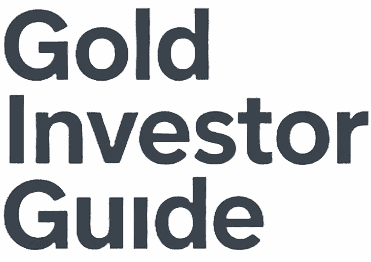In a world full of market corrections, rising debt, and political uncertainty, gold is once again taking center stage. Investors are asking the same timeless question:
Is gold a good investment?
The answer isn’t a simple yes or no—but understanding the role gold plays in today’s financial landscape can help you make a smarter, more confident decision. So let’s break it down—from its ancient origins to its modern-day purpose in your portfolio.

A Brief History of Gold
Gold’s status as a store of value stretches back thousands of years. Ancient civilizations like the Egyptians and the Incas revered it—not just for its beauty, but for its perceived divine connection. These cultures never crossed paths, yet they both saw gold as something sacred.
For most of human history, gold wasn’t an investment—it was money. It didn’t have a fluctuating price because it was the thing everything else was priced against. It was stable, universally accepted, and carried no counterparty risk.
That began to change in the 20th century.
How Gold Became a Modern Investment
When the U.S. officially left the gold standard in 1971, gold was freed to float on the open market. Almost overnight, its price shot up—from $35 an ounce to over $800 by 1980. Investors who bought early saw massive returns. But those who jumped in late? They watched gold prices slide for nearly two decades.
This shift marked gold’s transformation from a stable store of value to a speculative asset with both risk and reward.
Why Gold Still Matters in 2025

Today, gold remains a unique and powerful hedge in uncertain times. It doesn’t pay a dividend. It doesn’t produce cash flow. But it offers something other assets often can’t: stability when everything else feels shaky.
As of April 2025, the U.S. stock market has entered a correction, with the S&P 500 down more than 20%. Economic concerns, new tariffs, and geopolitical tension are all contributing to investor anxiety. In times like these, gold often shines—because it behaves differently from stocks, bonds, and real estate.
It’s no wonder many advisors recommend holding 2–10% of your portfolio in gold. Even a small allocation can provide a powerful hedge against inflation, currency devaluation, and systemic risk.
How to Invest in Gold
You’ve got a few solid options, depending on your preferences.
1. Gold ETFs (Easy and Liquid)
If you’re looking for simplicity, gold ETFs are a convenient way to gain exposure to the gold price. The SPDR Gold Trust (GLD) is the most well-known, backed by physical gold stored in bank vaults. It trades like a stock and offers low fees and high liquidity.
2. Physical Gold (Tangible and Private)
Prefer something you can hold in your hand? Then physical gold—like gold bullion coins or bars—may be for you. In the U.S., the most popular option is the American Gold Eagle, a one-ounce coin minted by the U.S. government.
You can buy these coins from authorized dealers, many of which are listed on the U.S. Mint website. Other popular coins include the Krugerrand, Canadian Maple Leaf, and Australian Kangaroo.
Physical gold offers privacy, control, and independence from the financial system—but it also requires secure storage.
What About Fort Knox?
In early 2025, Elon Musk made headlines by suggesting that Fort Knox should be audited and livestreamed to the public. His call for transparency sparked debate and drew renewed attention to America’s gold reserves.
Fort Knox is home to over 147 million ounces of gold, making it the largest bullion vault in the world. While the government maintains that the gold is accounted for, Musk’s comments have reignited questions around access and trust.
Regardless of where you stand, the fact remains: the U.S. still holds more gold reserves than any country on Earth—by a wide margin.
The Rise of Gold Stacking
If you’ve browsed YouTube lately, you’ve probably come across a growing community of “stackers.” These are everyday people who buy gold (and silver) regularly—not to flip for quick profits, but to build long-term wealth and privacy.
Stacking is all about consistency. Whether it’s a few coins a month or larger purchases throughout the year, stackers often follow the mantra: “If you don’t hold it, you don’t own it.”
They track their purchases, stay aware of spot prices, and value the fact that gold is untraceable, portable, and private.
So… Is Gold a Good Investment?
Here’s the bottom line:
- Gold won’t make you rich overnight.
- It won’t pay dividends or generate yield.
- But it’s real, scarce, and trusted in times of uncertainty.
In 2025, with markets correcting and confidence shaken, gold offers something investors crave: a foundation. It’s not the flashiest asset, but it’s one of the most enduring.
If you’re looking to preserve your wealth, diversify your portfolio, and protect against the unknown, gold deserves a place in your strategy—just be sure to buy it wisely.
Final Thoughts
Gold isn’t for everyone, and it shouldn’t be your entire investment plan. But in times like these, when the economy wobbles and trust erodes, gold stands out as a steady, proven store of value.
Whether you go the ETF route or stack physical coins, the key is doing your research, avoiding hype, and thinking long term.
Because gold isn’t just an investment. It’s insurance against uncertainty.
